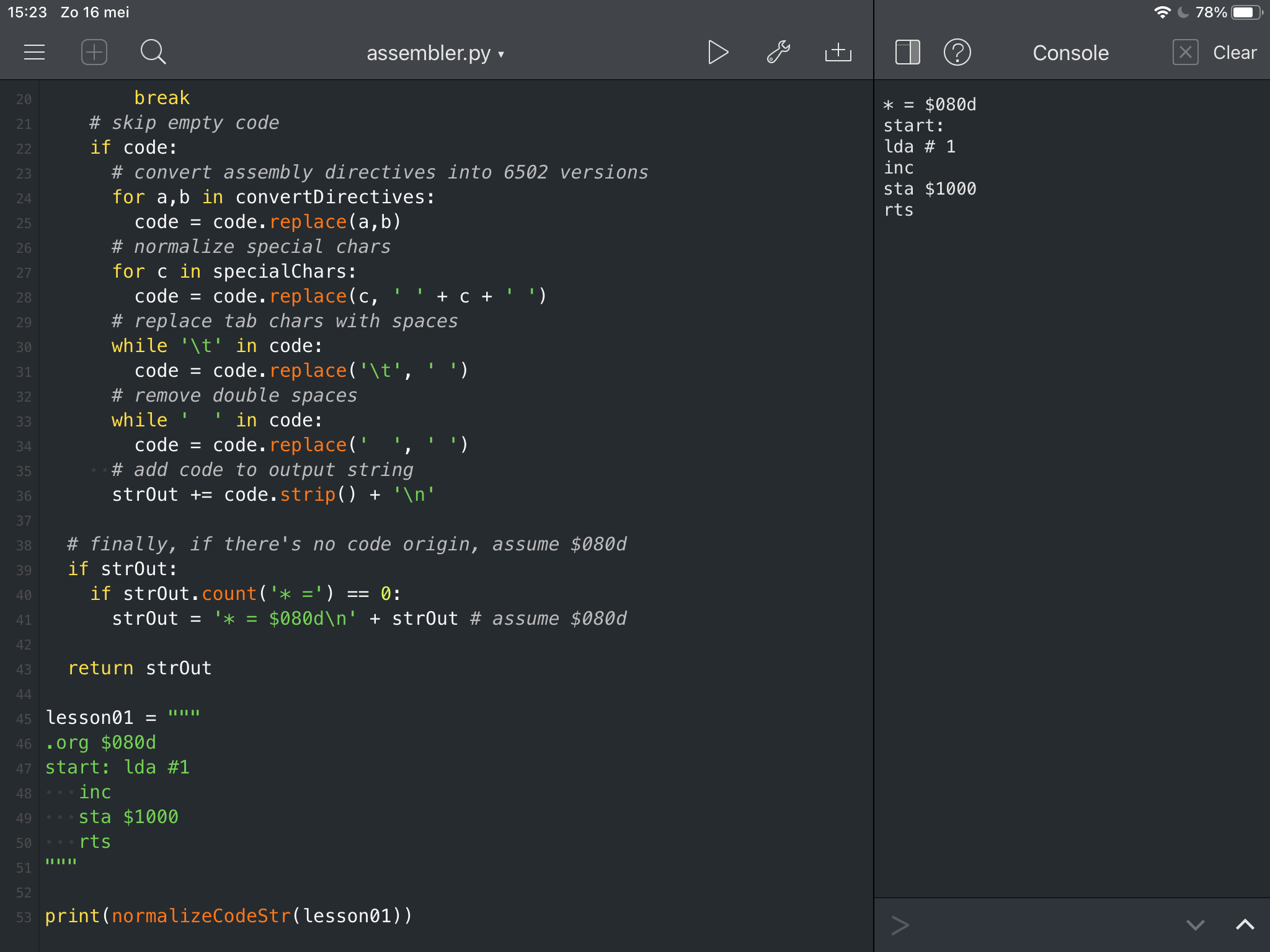-
I simplified and extended my Python 65c02 assembler. It now checks the source code for valid opcodes and addressing modes. It still doesn’t check if any label value is valid. For labels to work, it has to established their values first (in a first pass of two passes). More to do… 👨💻
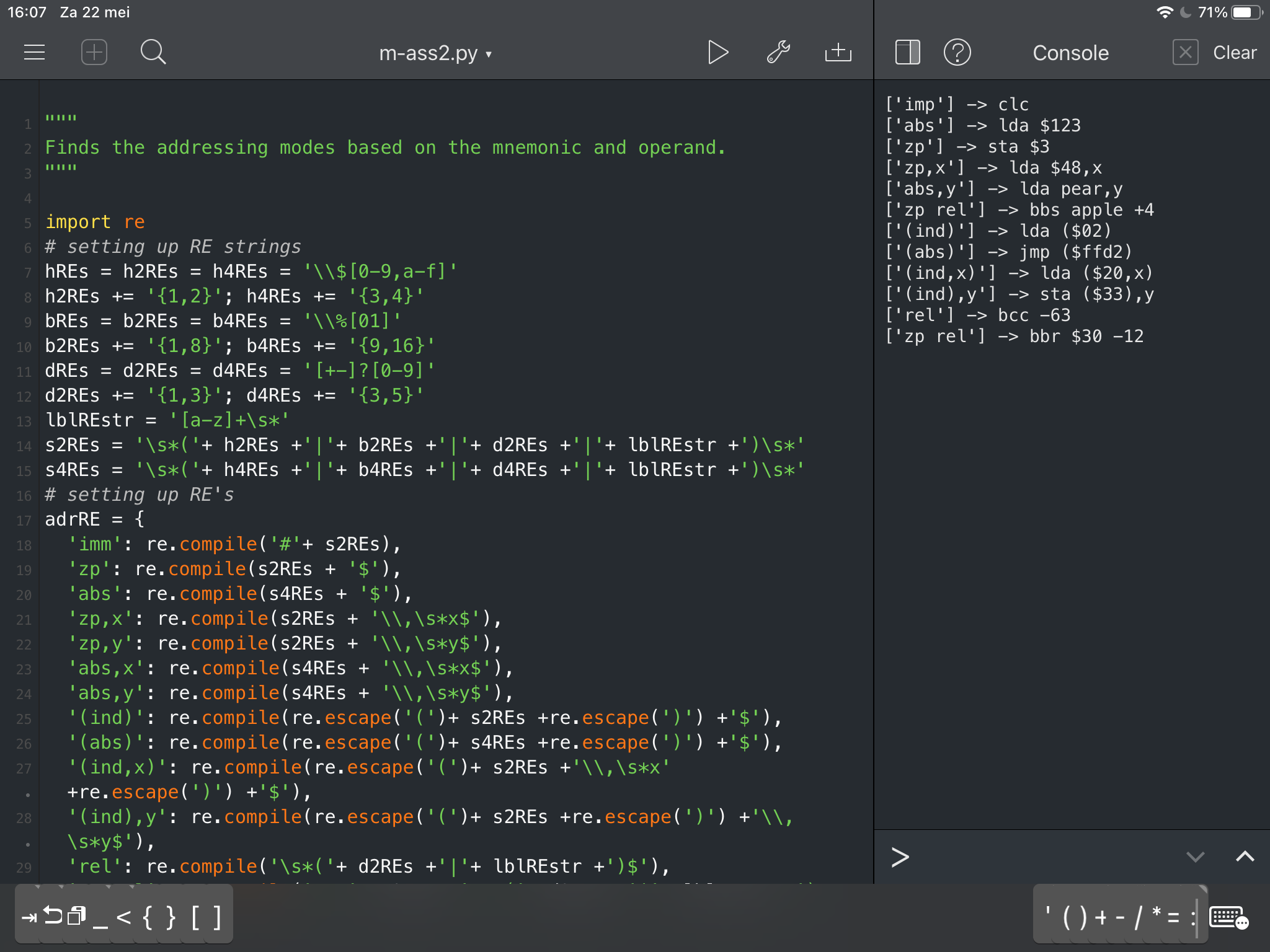
-
I’m sure there are much easier ways to find the possible addressing modes of the 65c02 cpu. Even so, I spent many hours of code hacking today to get this result, with many failed attempts. Obviously, I’m not good at coding, nor problem solving. Practicing it must be a good thing. 👨💻
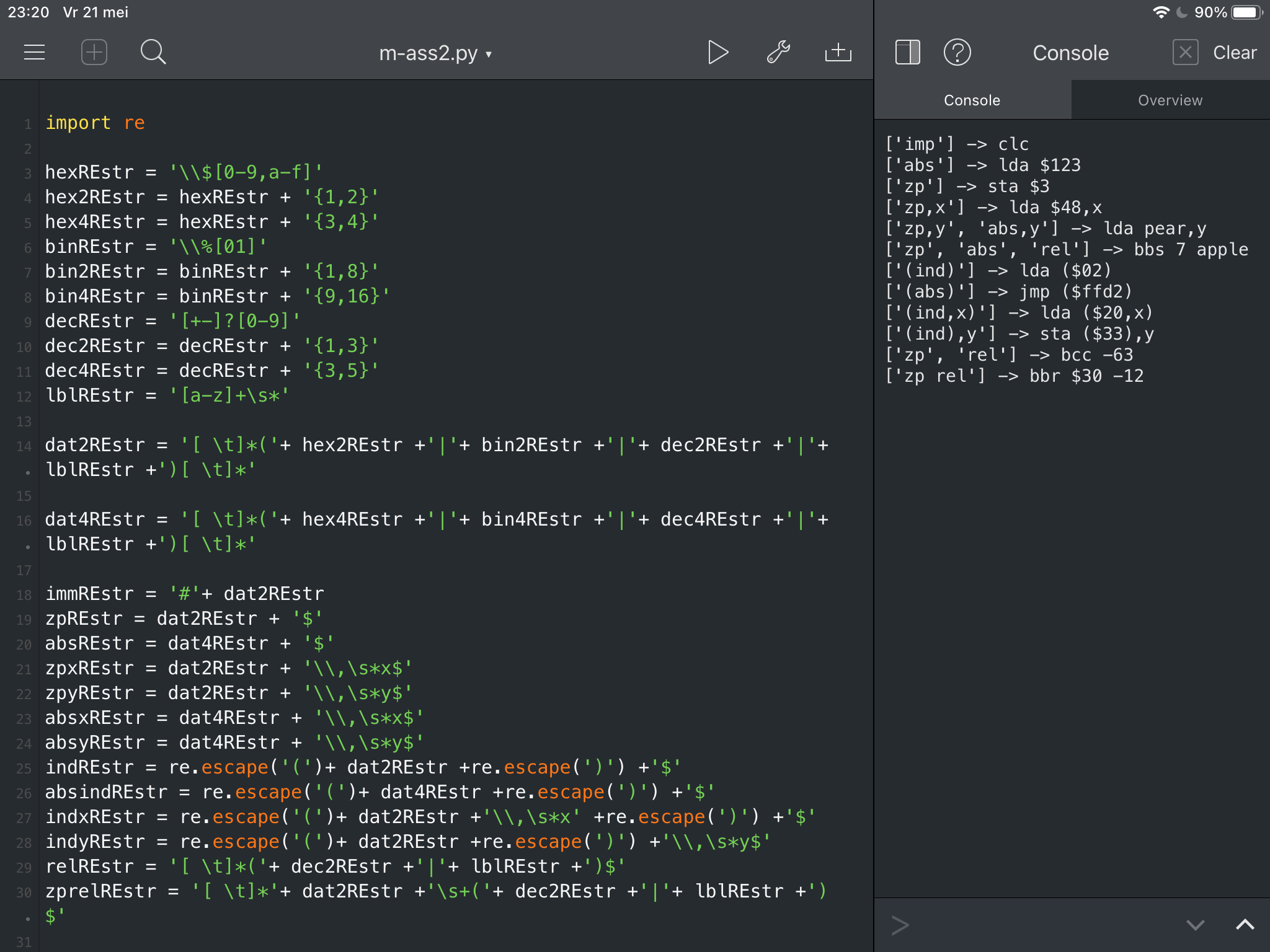
-
Okay, I can has implied, immediate, (indirect), (absolute indirect) addressing modes in this Python script I’m working on. It also makes a symbol table for code origin, labels and definitions (equates), used to calculate values and addresses. It’s a thing, 65c02 assembly on iPad. 👨💻
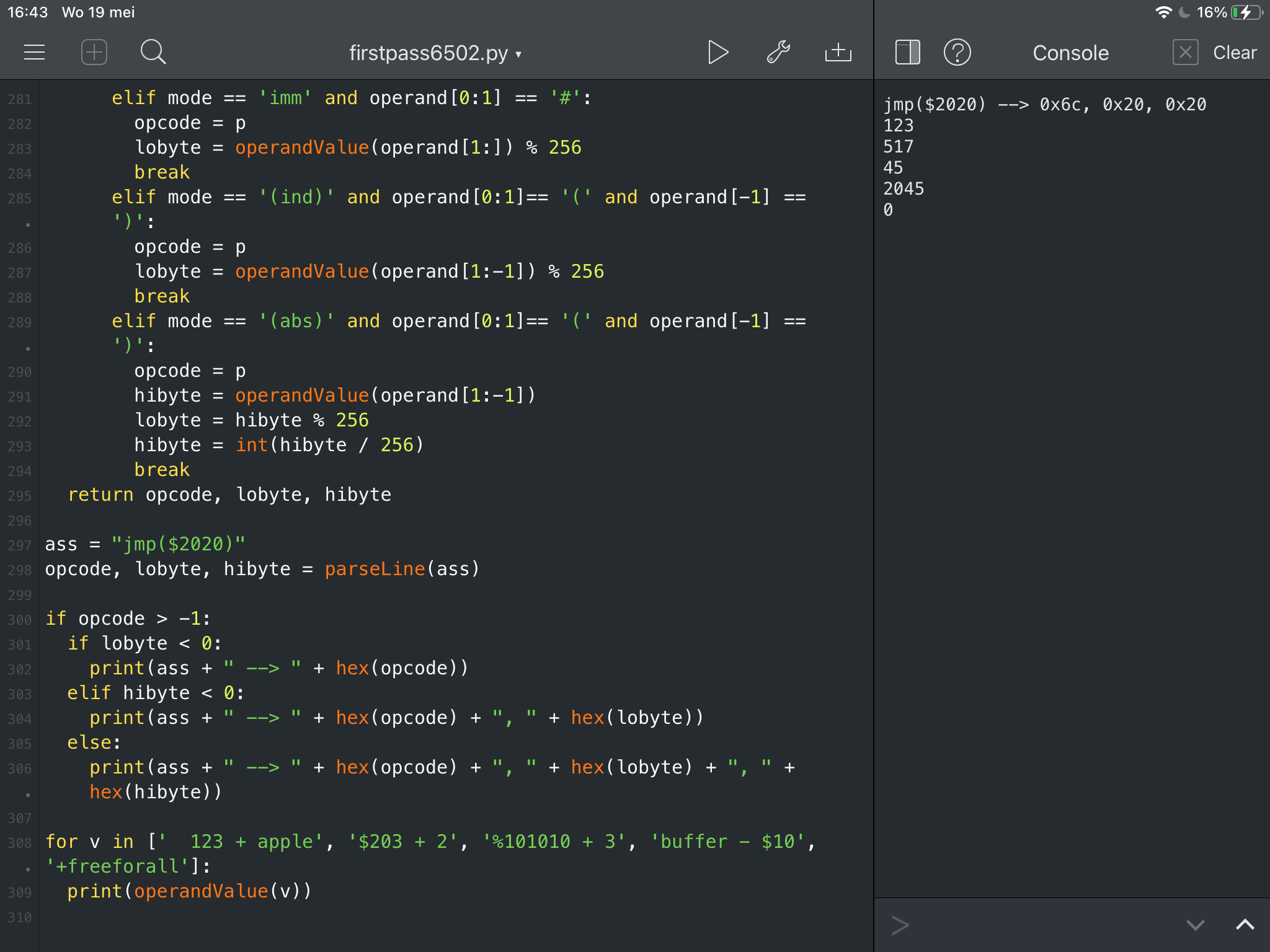
-
Instead of futzing around with Python, I decided to create a two-pass assembler, and wrote a version of the first pass, in which the label definitions are dealt with, both explicit and inline. I won’t create a professional grade assembler, just a hobby one. 👨💻
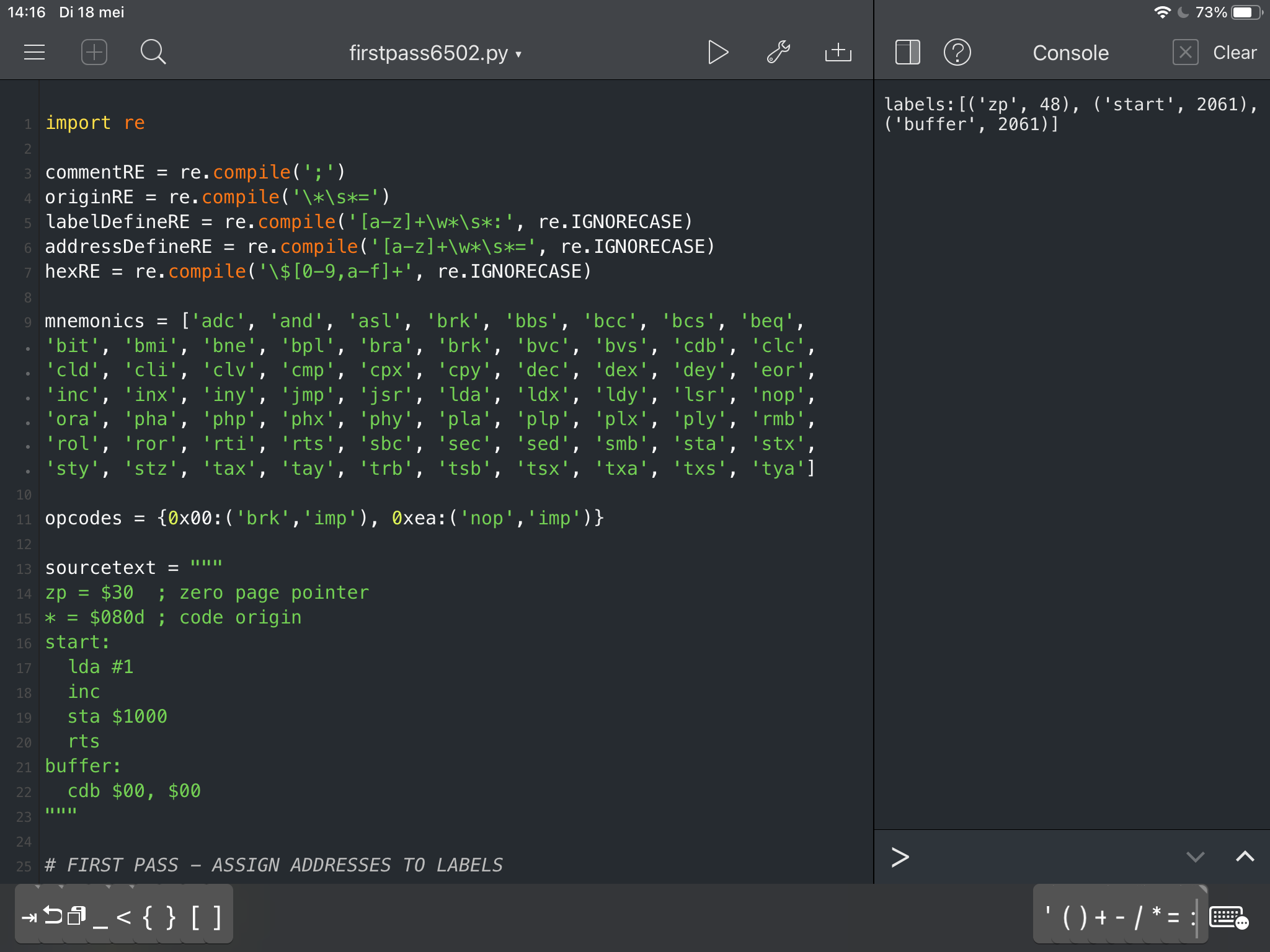
-
Computer science is giving me headaches. Reflection and regular expressions. Argh! I could just as well hand-code machine code instead. 👨💻
-
Writing my own 65c02 assembler in Python on the iPad, because I can ♥︎ 👨💻
